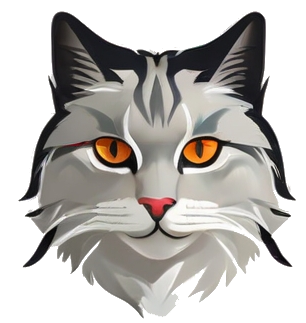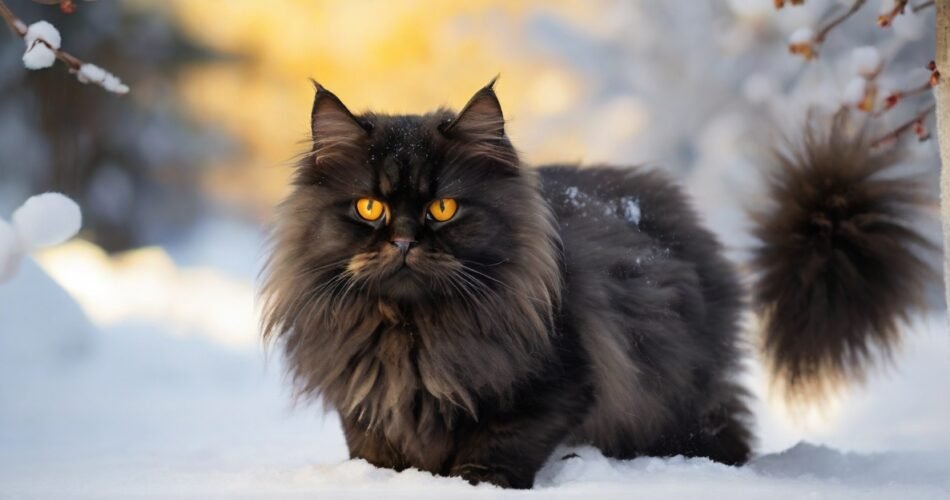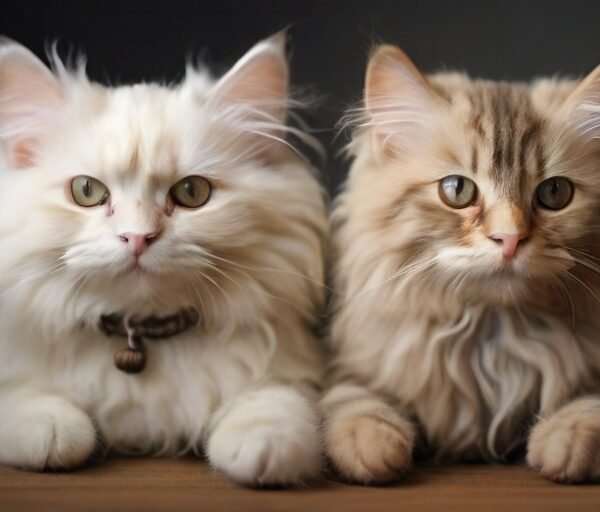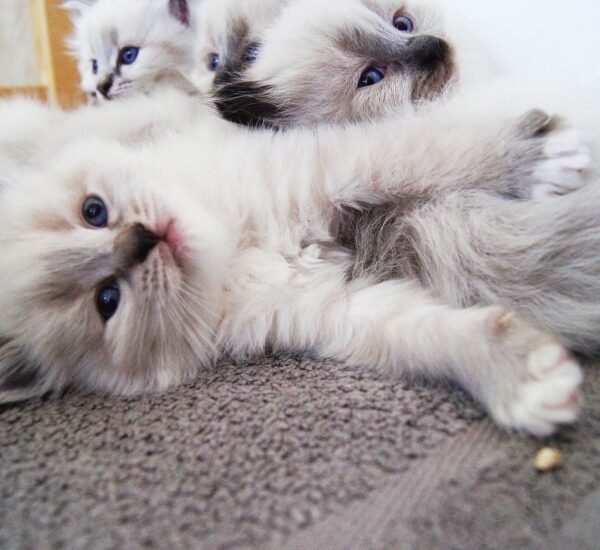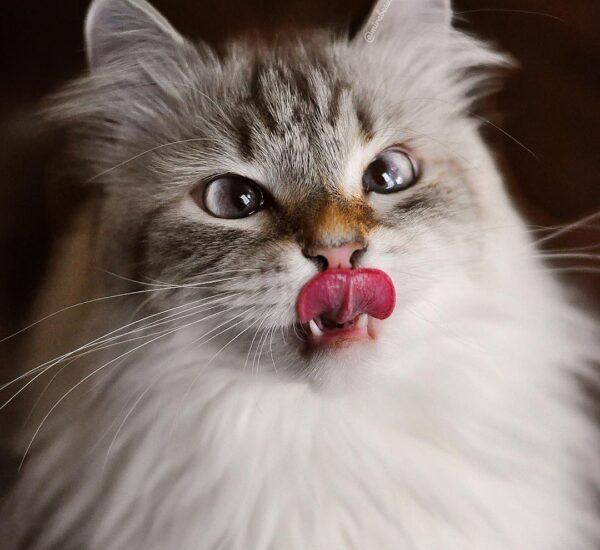Siberian cats resemble compact wild cats.
Russian Siberian cat is a true example of a natural breed. It is said that these medium-sized, robust cats originated in their native Russia without any human influence. They were selectively bred only from the 1980s onwards. Enthusiasts are particularly captivated by their resemblance to forest cats, referred to in Russia as ‘Sibirskaya koshka,’ and their easygoing nature. The dense fur of this natural breed is adapted to the extremely cold winters and hot summers of Siberia. It keeps the cat warm during winter and is sufficiently breathable for sunny summer months.
Size and weight of Siberian cats
Siberian cats are essentially miniature versions of wildcats. Thanks to their semi-long hair with luxurious overcoat and dense undercoat, these cats resemble Maine Coon cats and Norwegian Forest cats. However, they are smaller than Maine Coons and have longer legs than Norwegian Forest cats. Siberian cats can grow up to 120 cm in length with 30-35 cm at the shoulders. Medium-sized cats are muscular and weigh up to nine kilograms. Therefore, they are not fully grown until they are around three years old.
Coat
The coat of a Siberian cat, which is two-layered in winter, is water-repellent and keeps the cat warm with its particularly dense, fine undercoat. There is also a distinctive and luxurious mane around the neck and chest. On the other hand, in summer, the Siberian cat sheds its undercoat, resulting in much shorter and lighter summer fur that is perfect for the warm summer months of northern Siberia.
The bushy tail remains the same even during warm summer months. Tufts of fur between the toes remain even when the cat sheds its winter coat. These cats typically have tufts on their ears as well. The Siberian cat has a fairly rounded skull with a rounded forehead, large eyes, and wide ears. The eye color should be uniform and match the color of the fur. All shades from yellow, golden to green are allowed. Cats with white fur or two-tone cats may have blue or odd-eyed (different colored) eyes.
Colors of the Siberian cat
As with many cat breeds, different breeding organizations have their own requirements for the appearance of the Siberian cat. Depending on the club affiliation, the standard of the international breeding association usually applies. This is particularly evident when it comes to desired coat colors. The umbrella organization TICA allows all traditional colors. However, most other breeding organizations do not allow the colors Cinnamon, Fawn, Chocolate, and Lilac.
The variant of the red color of the Siberian cat is called Cinnamon. The term Fawn in English refers to the dilution of the Cinnamon variant of the red color. Siberian cats of Fawn color have reddish-beige fur. Chocolate is the breeding term for the brown base color. When the brown color is diluted, it appears as Lilac.
Additionally, all colors and patterns are allowed as well as any amount of white color. As the only forest cat breed, the Siberian cat is also allowed to have a Point pattern. Siberian cats with a Point pattern even have their own special name – Neva Masquerade. The Fédération Internationale Féline (FIFe) lists Neva Masquarade as an independent breed. According to the breed standard, cats with a Point pattern are also allowed to have blue eyes – the darker, the better!
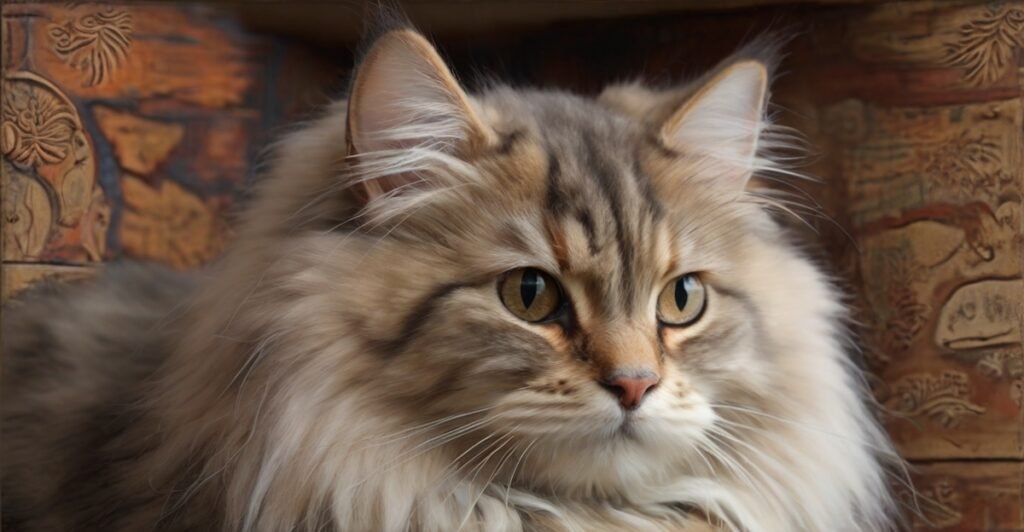
The Character of the Siberian Cat
Not only is the appearance of the Siberian cat distinctive, but its character is also very straightforward with excellent instincts. Siberian cats are considered excellent hunters; they enjoy jumping and climbing. Due to their need for movement, they are not ideal pets for apartments or houses. A secure garden suits the nature of these forest cats best. These cats enjoy spending time outdoors regardless of the weather conditions. Siberian cats love water; a downpour or snowstorm won’t stop them from taking a stroll in the garden.
Siberian cats are extremely curious and know what they want. They are considered intelligent and adventurous animals. For example, many Siberian cats easily learn to open doors. Siberian cats have strong wills, so training is necessary to prevent them from walking all over you. Despite this, the Siberian cat is very attached to its owners. Many fans of this breed often mention how they can have real conversations with their pet.
Thanks to their distinctive appearance and character, Siberian cats make devoted and resilient pets!
Care
Siberian cats love spending time outdoors. These active cats enjoy jumping, running, and hunting. An ideal home should have a secure garden where this cat can climb trees, sharpen its claws, or hunt mice and birds.
The long fur of the Siberian cat can easily become tangled. Especially in winter and during shedding season, cats need a little help with grooming. If a cat is introduced to a comb or brush early on, grooming usually won’t be an issue. Thoroughly groom your pet’s fur every few days, removing loose fur and small knots. During the warmer months, the Siberian long-haired cat will shed most of its undercoat. Providing hairball paste and offering catnip can help facilitate the natural expulsion of swallowed fur. During the summer months, the Siberian cat typically takes care of its shorter, thinner coat on its own.
Nutrition
In addition to grooming, appropriate nutrition is essential for your Siberian cat to enjoy a long, healthy, and active feline life. As carnivores, cats require food rich in healthy proteins and low in carbohydrates. An annual visit to the veterinarian also helps in detecting health issues early and clarifying questions about care and nutrition.
Breeding Siberian Cats
Since the breeding of Siberian cats is still very young, there are almost no hereditary diseases typical for this breed. Crossbreeding with foreign breeds and inbreeding can, in individual cases, lead to the appearance of hereditary diseases.
Professional breeding that avoids inbreeding is the best prevention against diseases. Breeders of Siberian cats, as well as buyers, have a great responsibility in protecting these pets from hereditary diseases!
Avoid suspicious offers
For you as a buyer, it is especially important to purchase your animals only from a professional breeder. Advertisements promising cats at a low price may be tempting, but in most cases, the welfare of the animals is not a priority here. Cat breeding is an expensive hobby. Anyone who wants to make a profit from selling their animals usually saves on food, breeding, care, and thoughtful pairing of their animals.
A responsible breeder who takes responsibility for their animals and their offspring does not skimp on their cats. Regular visits to the veterinarian and screenings for known hereditary diseases, such as HCM and kidney cysts, are common procedures during breeding.
Sick animals are excluded from breeding. Breed clubs do not only issue certificates. They also monitor breeding standards. Therefore, anyone involved in serious breeding is also a member of one of the countless cat breeding clubs.
Before kittens are ready to move into their new homes, they must stay with their mother and siblings for at least 12 weeks. In this important phase, kittens learn everything that prepares them for a long, healthy cat life! The breeder monitors their cats 24 hours a day and provides them with everything they need to grow up. Buyers of their kittens are available for advice even after purchase!
Price of Siberian Cat
To cover their costs, a professional breeder must assess a specific purchase price per cat. Siberian cats from a registered litter can cost between 800 and 1600 euros per animal. The future owner of the cat will, of course, face significant costs. In return, you will receive a well-socialized, healthy cat with which you will enjoy many years.
Another option is to visit an animal shelter. Many cats are waiting for their home here. Among them are also long-haired beauties!
